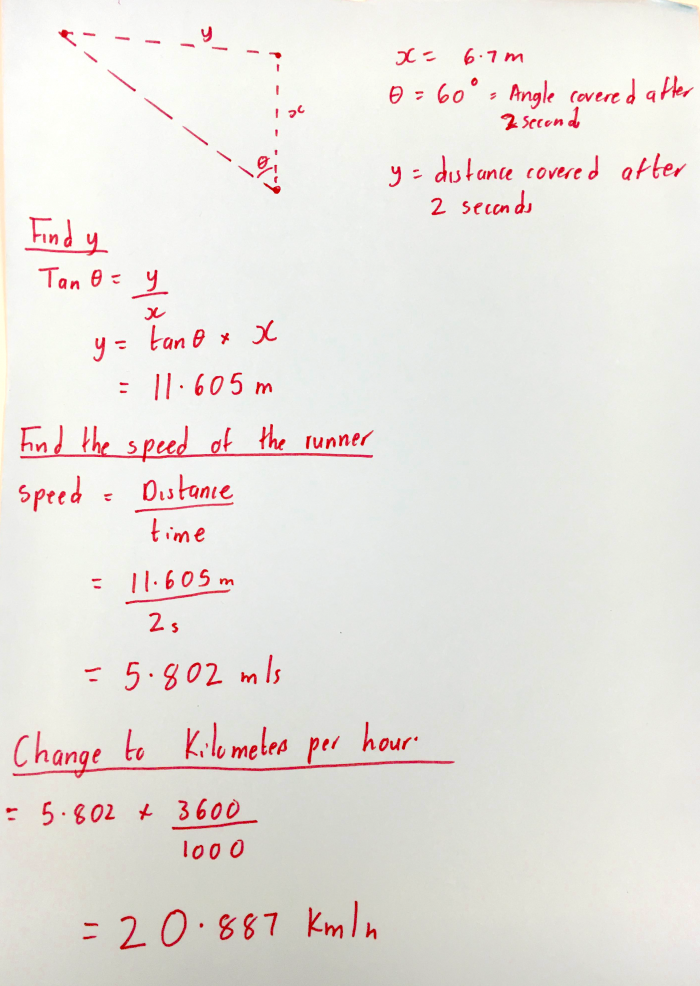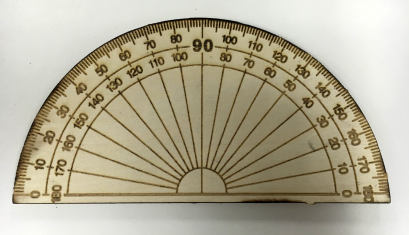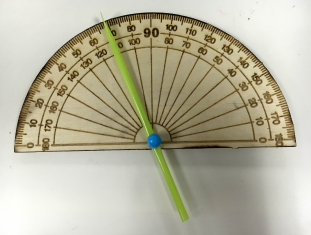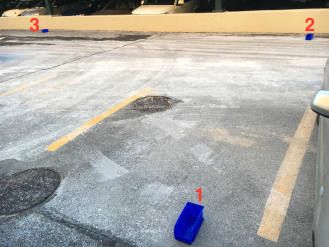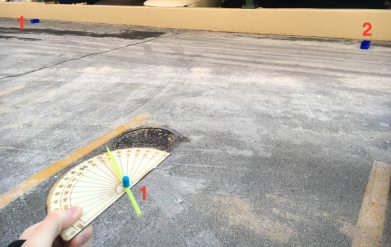Calculating Speed Using Trigonometry
Through this project, students will use trigonometry to calculate the speed of a runner. By measuring time, distance, and angles, the students will be able to determine the speed of a moving object.
Authors
Luke Hanley, Vincent Bett, and Nico Lusardo
Description
For this project, one would need a protractor, a pointer and a timer. We laser cut wood to form a protractor and modified a straw to act as the pointer. We used the timer in our phone to measure the time.
This project can also be done using a regular protractor and a stopwatch.
To measure the speed of an abject, an observer should stand at a certain known distance from the path of the object. Then as the speeding object passes through, the observer should measure the change in angle of the pointer and the time it takes for the angle to change. The observer should then use trigonometry ratios to determine the distance covered by the speeding object and then the speed.
One thing to note is that the faster the object, the shorter the measured time.
Initial Action Plan
We designed an experiment to determine the speed of a runner without simply measuring the time it takes to run a specific distance. In this experiment, the speed can be calculated by an observer from a distance.

Protractor Construction
We found a picture of a protractor on the internet and then laser cut the image on a piece of wood to come up with our own home made protractor. Then we attached the pointer (straw) on the center of the diameter of the protractor to make the pointer.
Angle Calculation
We then went outside, bringing the stopwatch, the protractor, and three blue boxes to be used as markers. We set up box #1 and box #2 a predetermined distance apart (in our case 6.7 meters). We then had the runner start running from a few meters behind box #2 in order to ensure a constant speed between the start and finish points. Once the runner ran past box #2, running perpendicular to the line made by box #1 and #2, the stopwatch began to record the time. The amount of time an observer chooses to use depends on the speed of the runner. For our experiment, we stopped the stopwatch at 2 seconds because this gave us a considerable change in angle, making the calculations easier. At the exact moment that the stopwatch was stopped, we observed the spot where the runner was located at that time, and we marked that spot with box #3. From box #1, we calculated the angle between box #2 and box #3 with box #1 as the vertex.
Using the known distance between box #1 and #2, the angle made by the runner, and the exact time it took the runner to make that angle, the speed of the runner could then be calculated.
Speed Calculation
In order for a student to calculate the speed of the object, the student needs to have knowledge of trigonometry, more specifically the student needs to know how to use trigonometric ratios to calculate distance. Then after finding the distance covered by the object, the student needs to apply the formula for calculating speed in order to find speed.
This part also tests a students ability to convert the results to the standard SI unit of speed.
